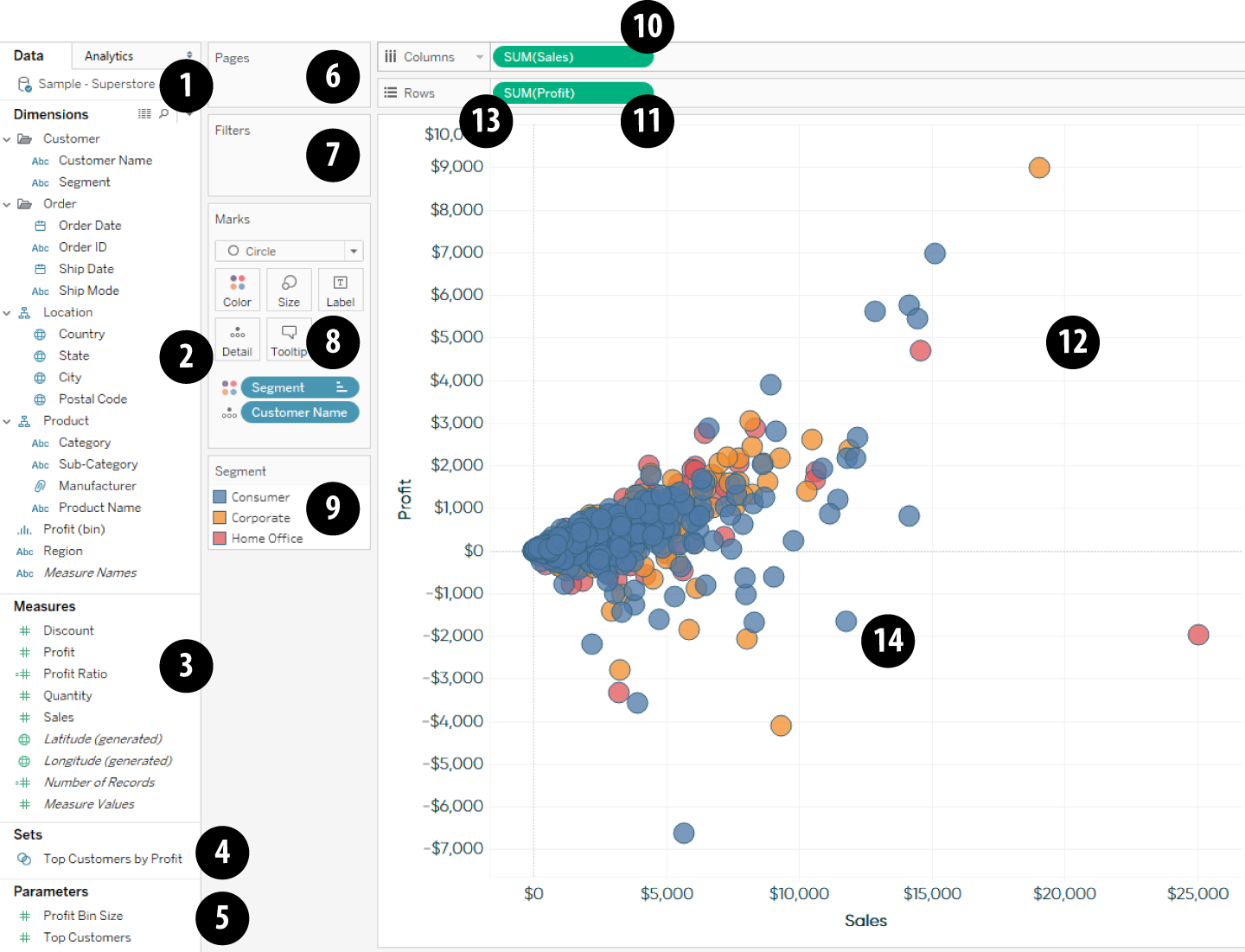Chapter 5. Getting a Lay of the Land
This chapter provides an overview of the Tableau interface, terminology, and a couple of preliminary things I like to do whenever I start working with a new dataset. While this is certainly not an exhaustive list, it will help you get started authoring in Tableau immediately and will provide a foundation for what’s to come.
Tableau Terminology
To walk through some of the most important Tableau terminology, we will use the following key followed by names and definitions:

-
Data Sources: Displays all of the data connections in the workbook. Note that only one data connection (Sample – Superstore) is being displayed in this example, but you can connect to more than one data source at a time.
-
Dimensions area of the Data pane: A list of all of the fields in the data source classified as dimensions (discussed in the next chapter).
-
Measures area of the Data pane: A list of all the fields in the data source classified as measures (discussed in the next chapter).
-
Sets area of the Data pane: If the data source you are using contains at least one set, or if you have created one or more sets, they will show up here.
-
Parameters area of the Data pane: If the workbook you are using contains at least one parameter, or if you have created one or more parameters, they will show up here.
-
Pages Shelf: The Pages Shelf allows you to “flip” through ...
Get Practical Tableau now with the O’Reilly learning platform.
O’Reilly members experience books, live events, courses curated by job role, and more from O’Reilly and nearly 200 top publishers.

